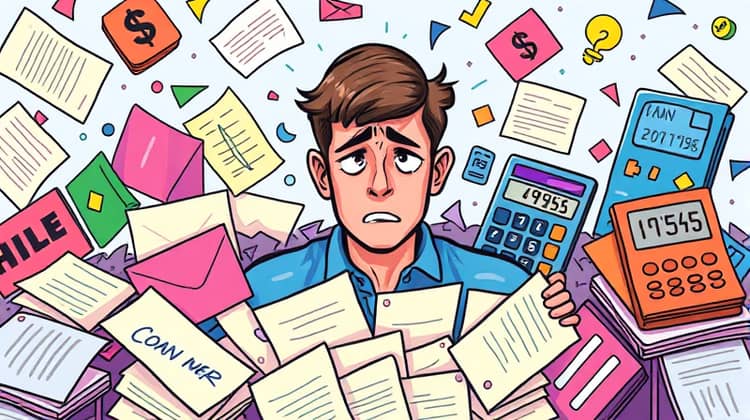Loan Stacking: How to Avoid the Spiral of Debt

Managing finances effectively is crucial for maintaining a healthy financial lifestyle. One of the significant challenges many individuals face is loan stacking, which can lead to a troublesome spiral of debt if not addressed properly.
In this article, we will explore what loan stacking is, its dangers, signs that you might be stacking loans, how to avoid it, and what steps to take if you find yourself in this situation. Understanding these aspects is vital for ensuring your financial well-being.
Understanding Loan Stacking

Loan stacking refers to the practice of taking out multiple loans across various lenders without fully comprehending the cumulative impact on your financial status. This often occurs when individuals face urgent financial needs and seek quick solutions without considering the long-term implications.
As a result, the debts can pile up, leading to higher monthly payments and a greater risk of defaulting. The ease of access to credit and the proliferation of online loan services exacerbate the issue, making it more tempting for individuals to take on more debt than they can handle.
- Definition of loan stacking
- Causes of loan stacking
- Consequences of loan stacking
- Ways to manage or consolidate loans
Understanding loan stacking is the first step in avoiding the pitfall of overwhelming debt.
The Dangers of Loan Stacking

Loan stacking can lead to several critical financial problems, including rising interest rates, increased monthly payments, and damage to credit scores. When multiple loans are taken out, it becomes challenging to keep track of payment deadlines, which can lead to missed payments and additional fees.
Additionally, the more loans one accumulates, the higher the risk of experiencing financial stress, which can affect one's overall well-being. The dangers of loan stacking extend beyond just the individual as it can also lead to a vicious cycle of borrowing more to pay off existing debts. They may find themselves trapped in a cycle of dependence on loans.
- Higher interest rates on stacked loans
- Negatively impacts credit scores
- Increased risk of financial stress
- Potential for legal consequences due to defaults
These dangers highlight the importance of being vigilant and proactive about managing debts before they spiral out of control.
Signs You Might Be Stacking Loans

Recognizing the signs of loan stacking is crucial in taking early action to address potential debt issues. Common indicators include receiving letters from multiple lenders, constantly feeling stressed about payments, and relying on loans to meet everyday expenses. These signs suggest a heavy reliance on credit that could lead to further financial troubles.
Another sign is if you are frequently borrowing from one lender to pay off another loan, which indicates that your current payments outpace your income. This pattern can quickly spiral into significant debt if not managed effectively.
- Receiving collection notices from lenders
- Taking out payday loans to cover existing debt
- Frequent credit inquiries on your report
- Using credit cards to pay bills instead of cash
Being aware of these signs can help you implement strategies to regain control over your finances.
How to Avoid Loan Stacking

To prevent loan stacking, it’s essential to adopt a proactive approach to financial management. Start by creating a comprehensive budget that clearly outlines your income and expenses, allowing you to see where your money goes and identify areas for potential savings.
Additionally, it is vital to prioritize urgent financial needs and seek financial advice before taking out any loans. Understanding the terms and conditions associated with any credit is also crucial.
- Create a detailed budget and monitor expenses regularly
- Limit borrowing to essential needs only
- Seek financial counseling if necessary
- Understand the terms and conditions of loans before applying
Implementing these strategies can help you avoid falling into the trap of loan stacking and maintain better control over your finances.
What to Do If You’re Already Stacking Loans

If you find yourself already stacking loans, don't panic. The first step is to assess your situation by listing all your loans, interest rates, and payment due dates. Developing a clear picture of your debts is essential for formulating an action plan.
Next, consider negotiating with lenders for lower interest rates or a more manageable repayment schedule, as many lenders are willing to work with borrowers in difficult situations.
- List all existing loans along with their details
- Contact lenders to negotiate better terms
- Consider consolidating loans into a single payment
- Seek professional financial advice
Taking these actions can help mitigate the risks associated with loan stacking and pave the way to financial recovery.
Conclusion

Loan stacking is a practice that can quickly lead you into a complicated web of debt. By understanding how it occurs and recognizing the signs, you can take steps to avoid it or address it proactively if you already find yourself in this situation.
Living in constant debt anxiety is not sustainable, and it affects not only your financial health but also your mental and emotional well-being. By prioritizing financial education and responsible borrowing, individuals can equip themselves with the knowledge needed to navigate their finances effectively.
Ultimately, the key to avoiding the spiral of debt lies in being informed, cautious, and proactive in managing your financial obligations. Living within your means and seeking help when necessary can safeguard you against the pitfalls of loan stacking.






